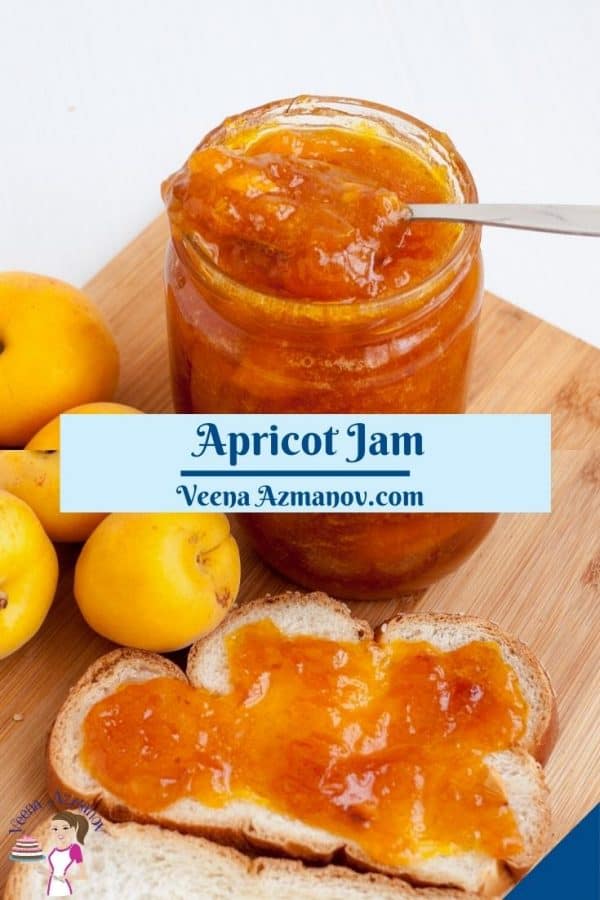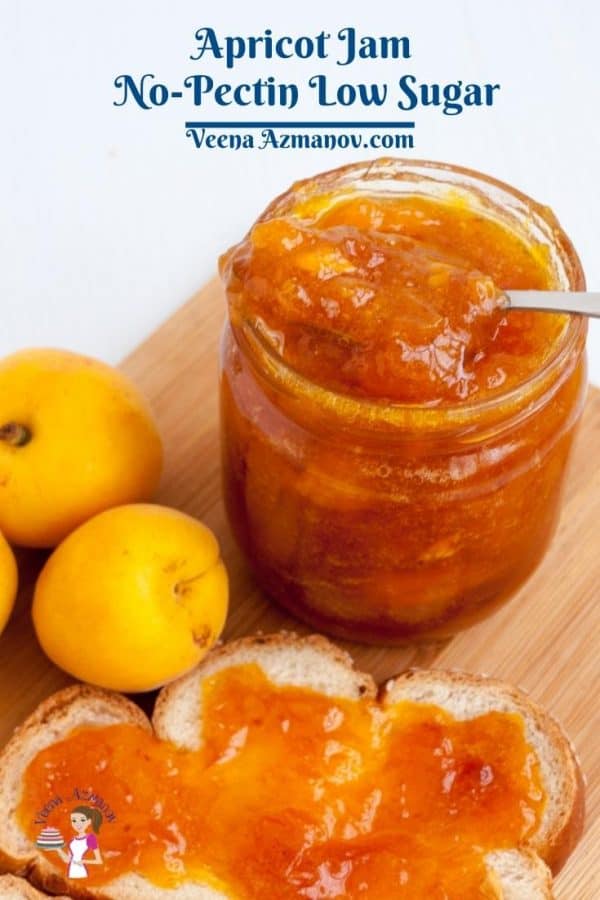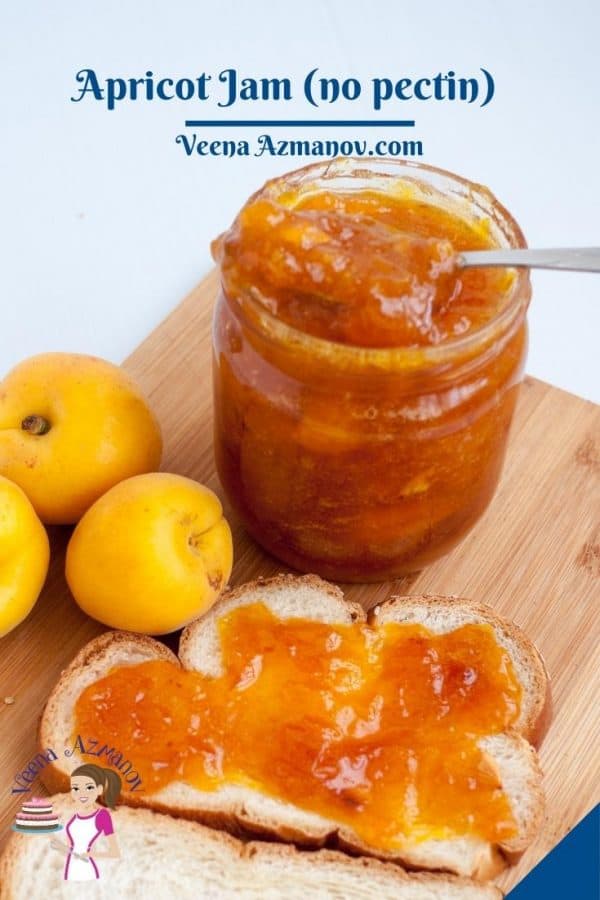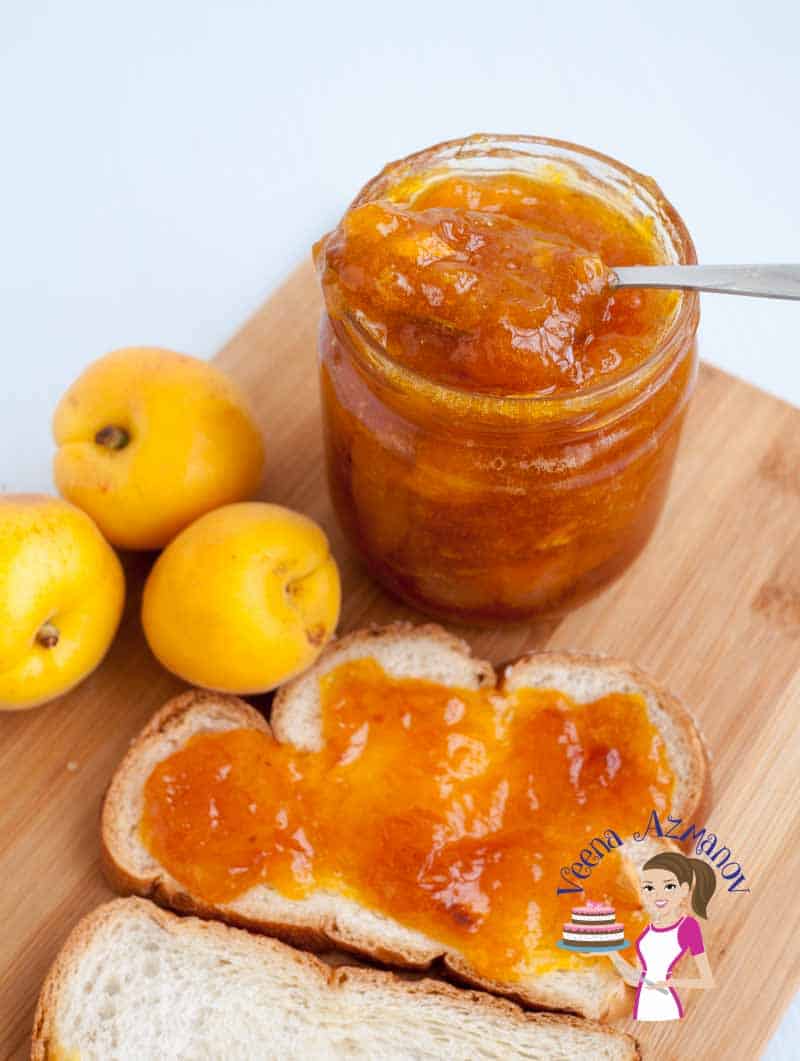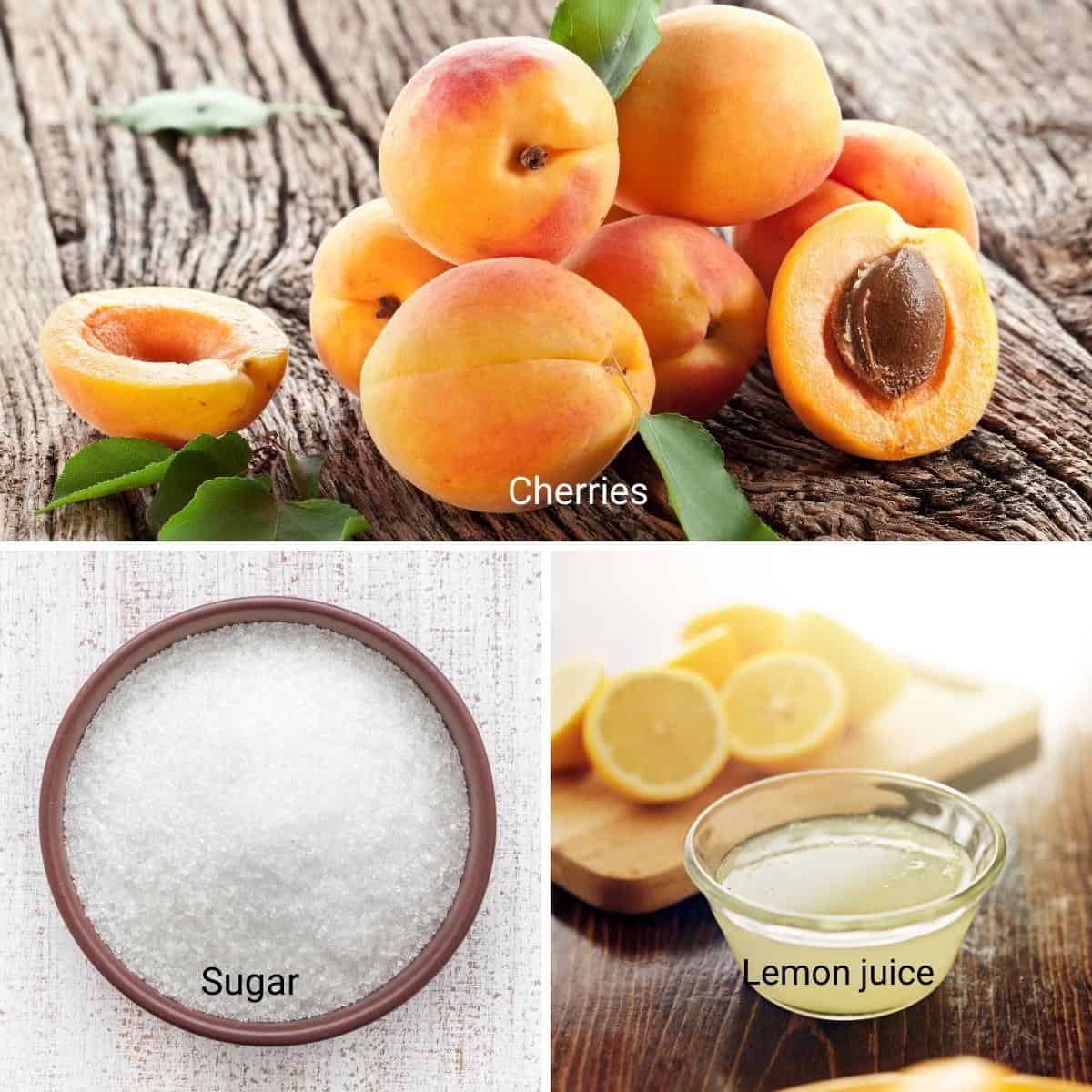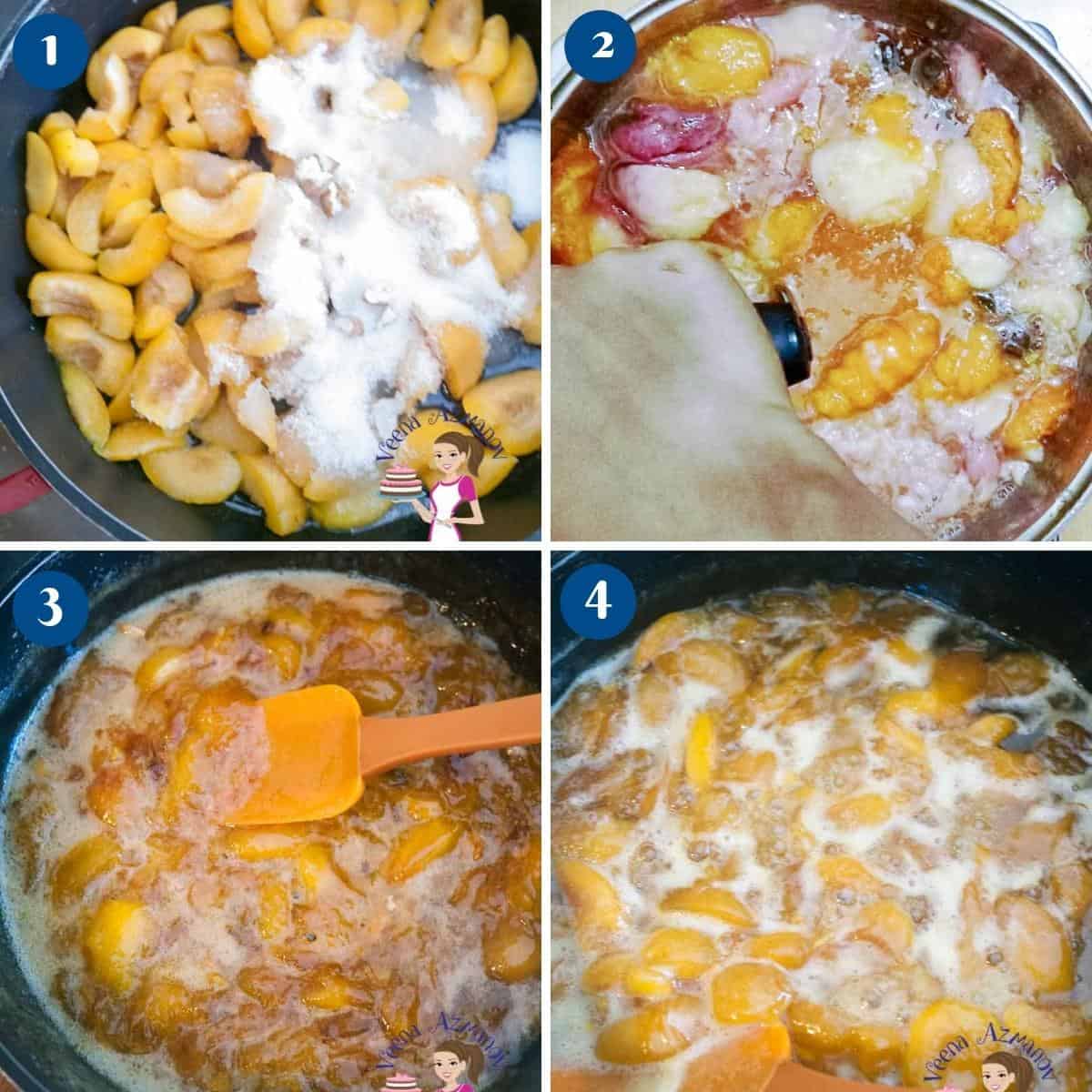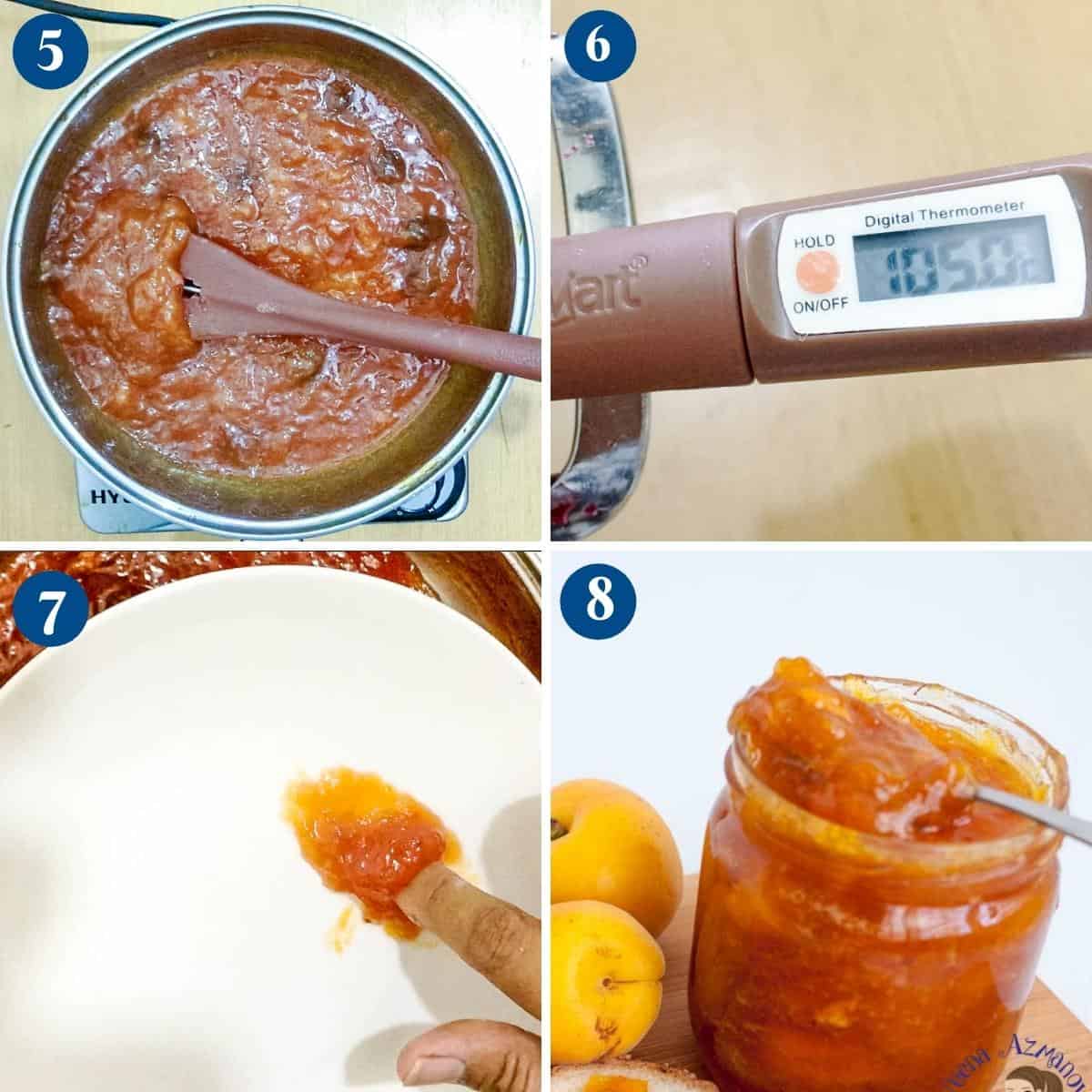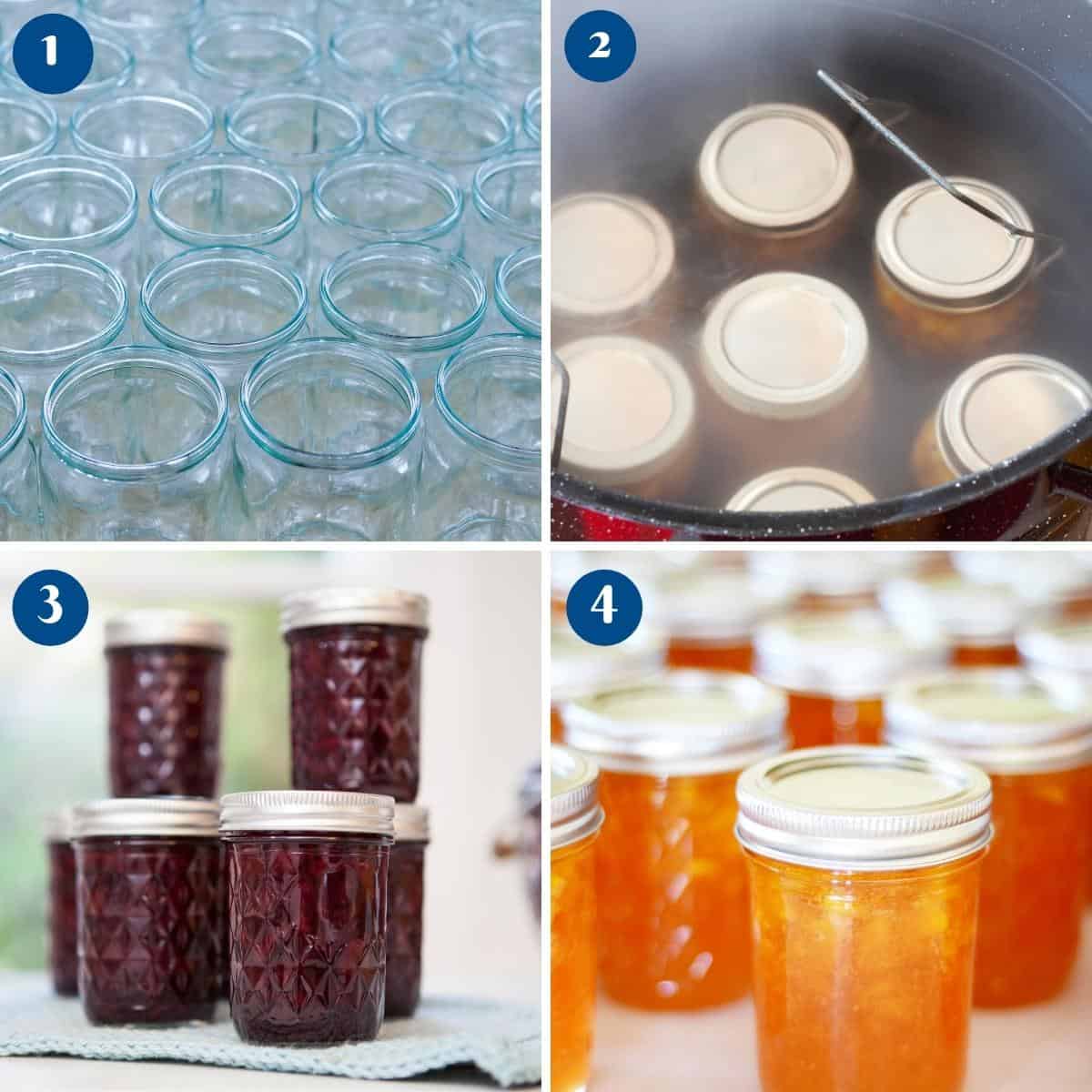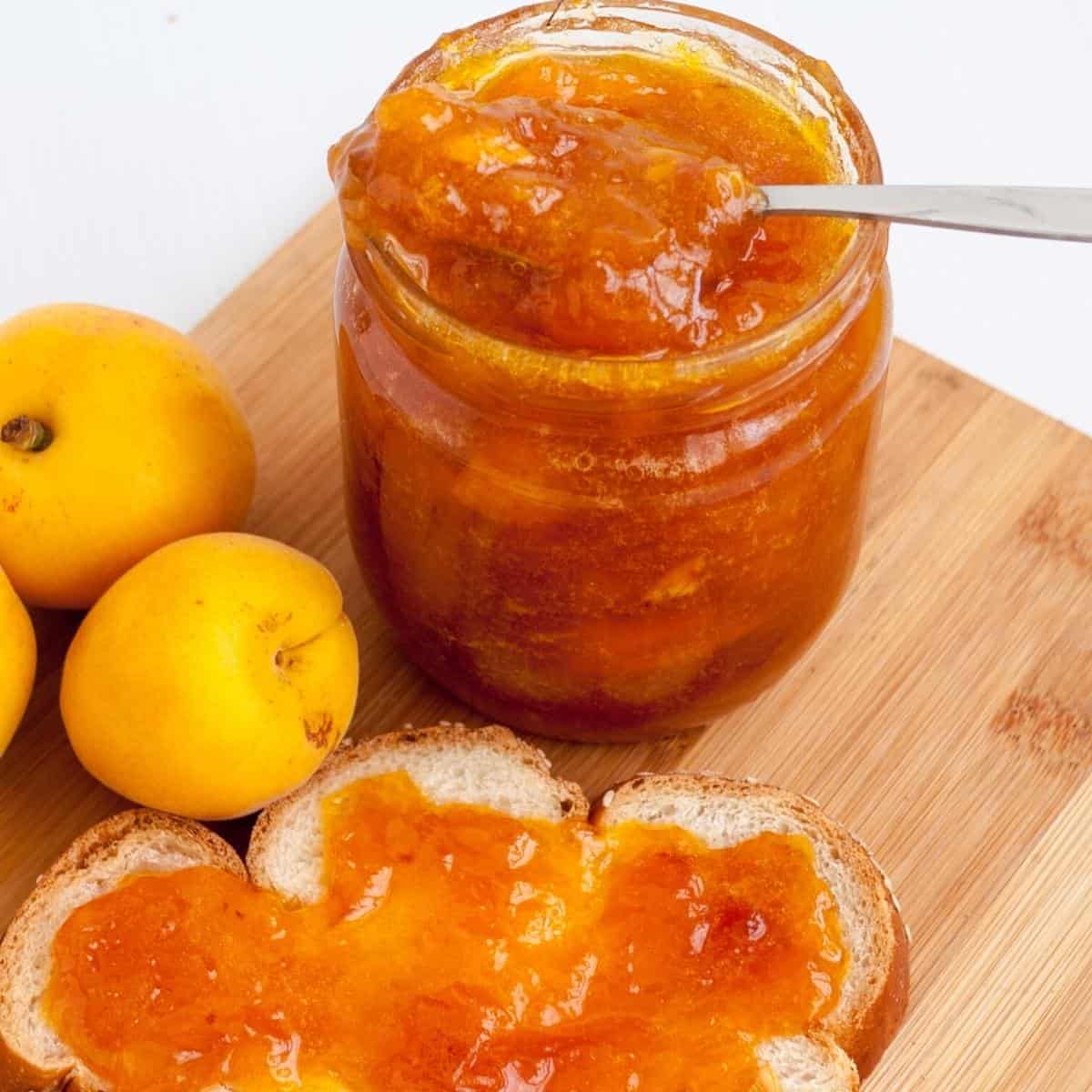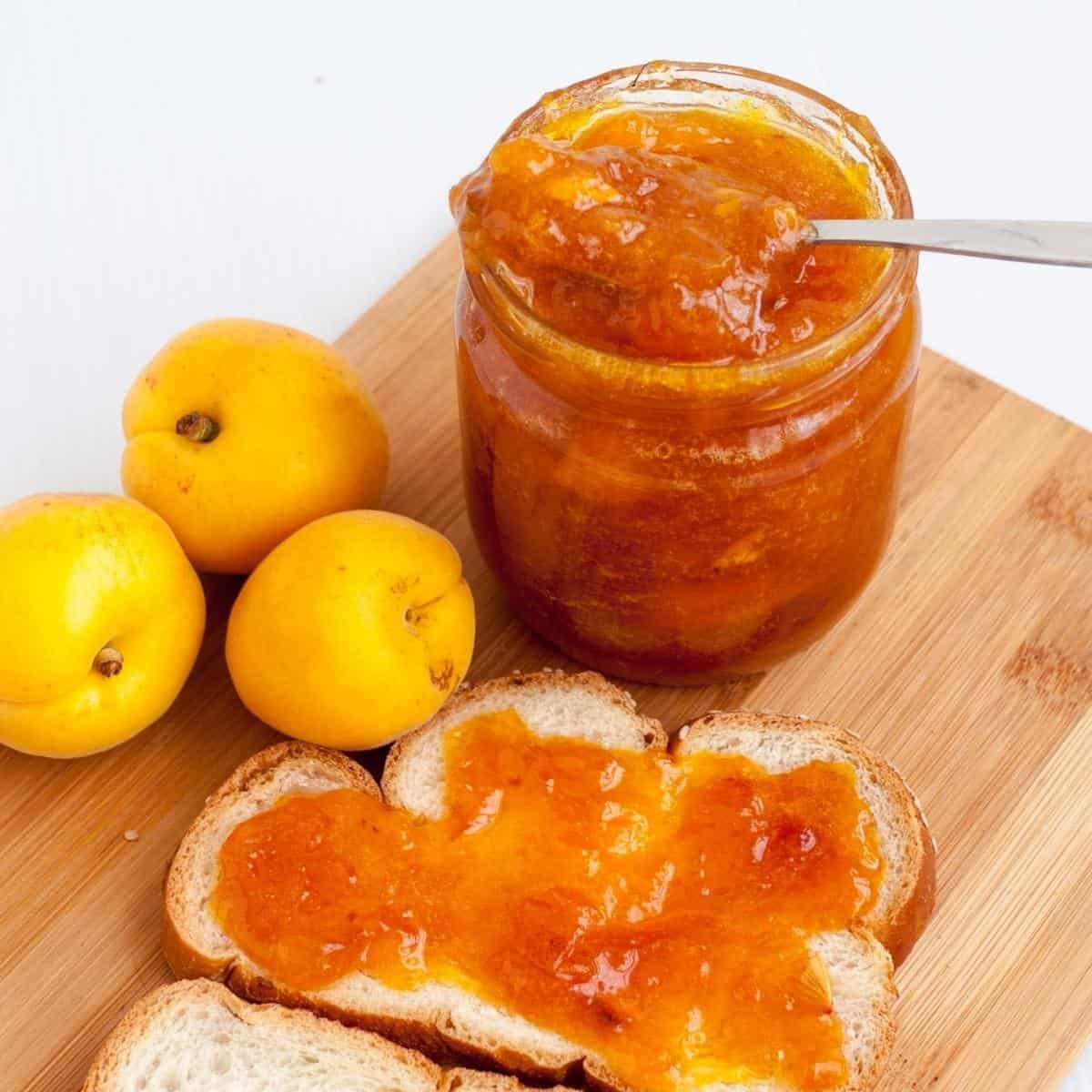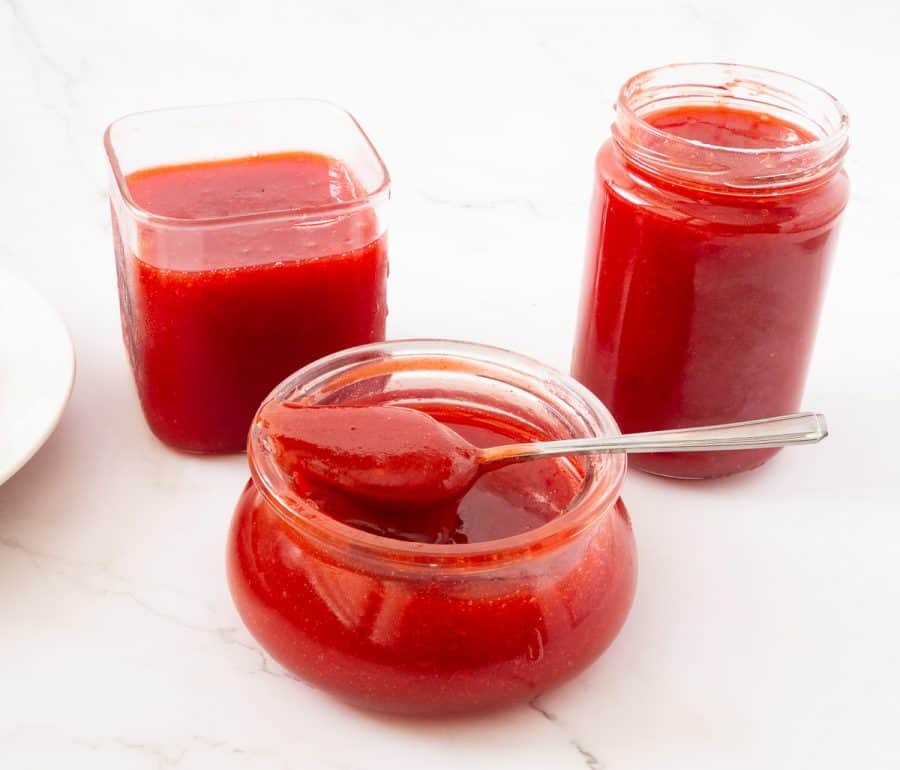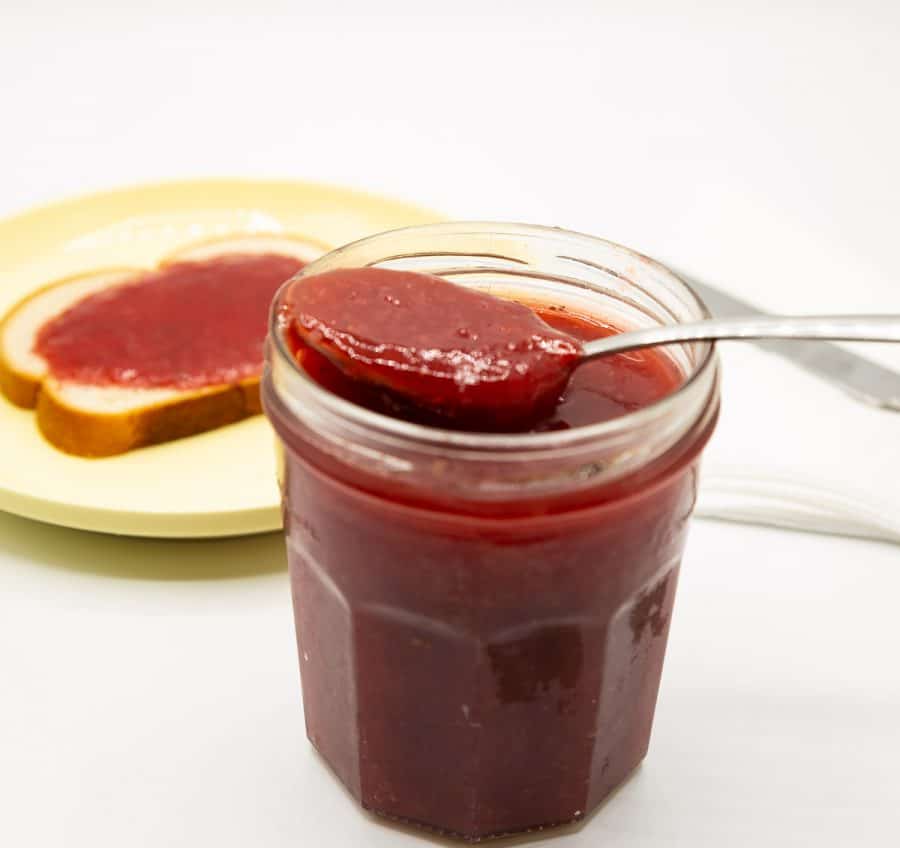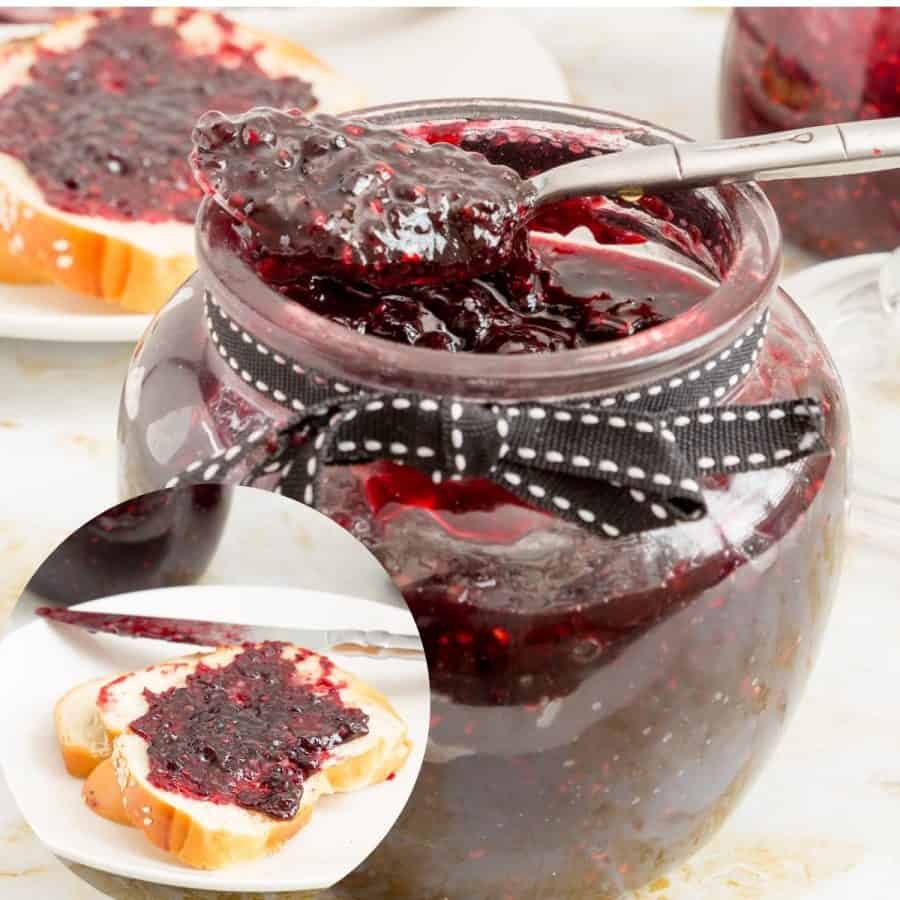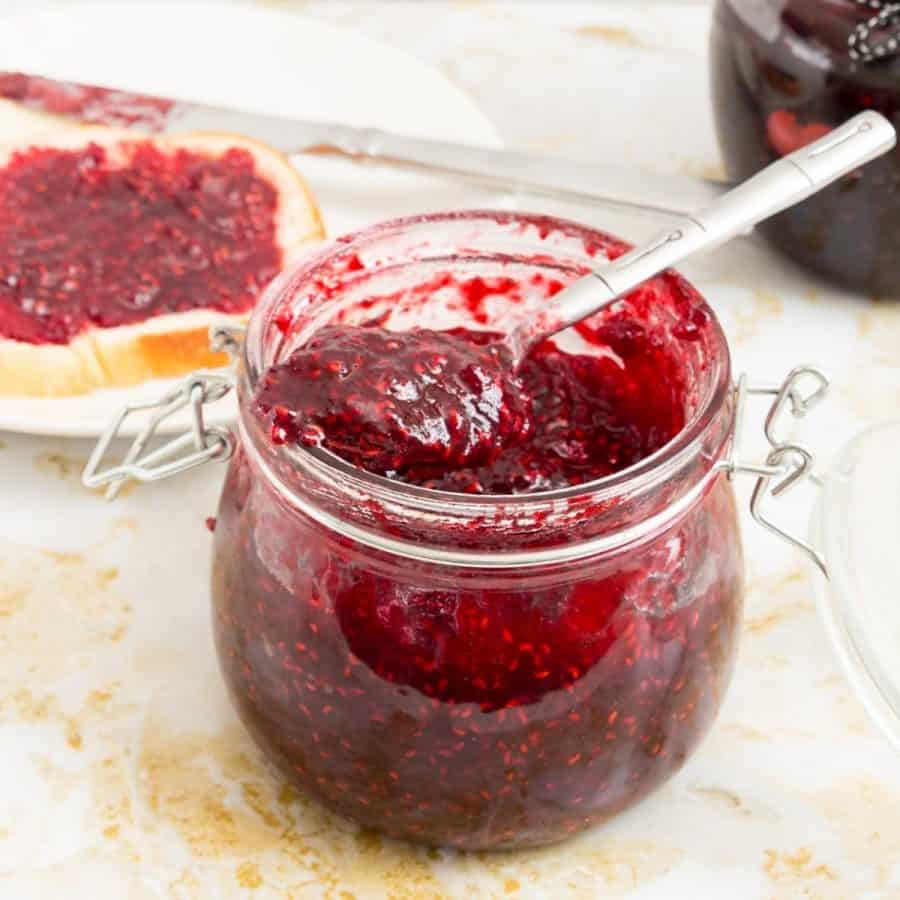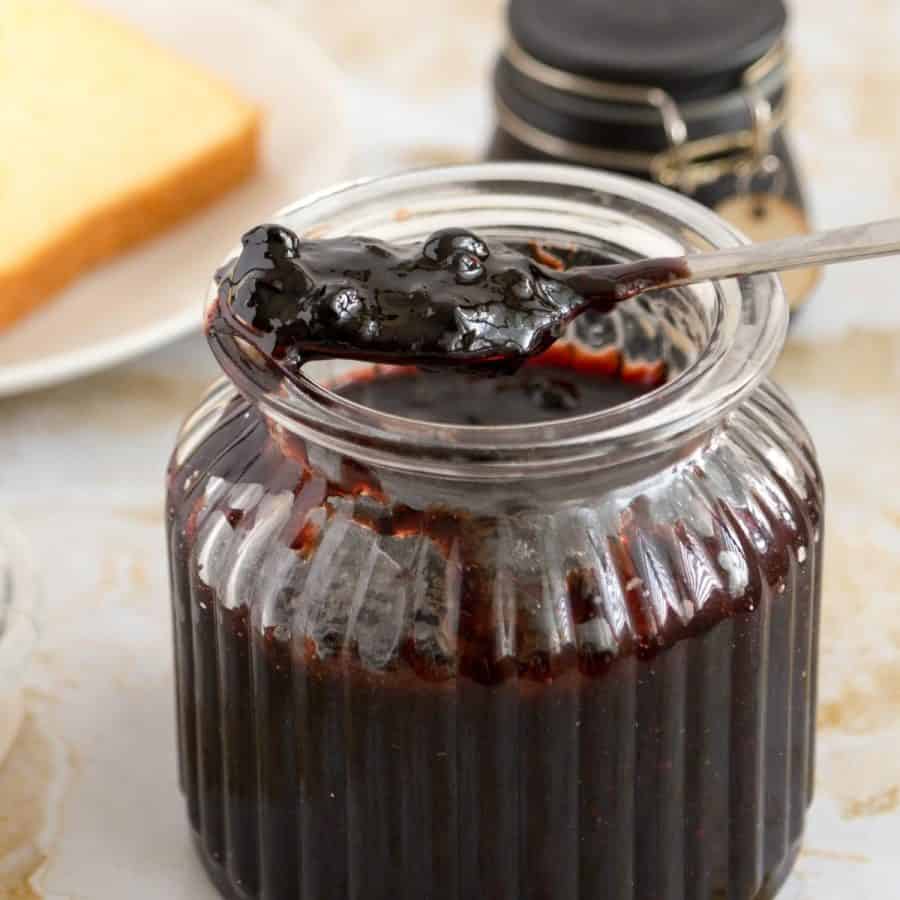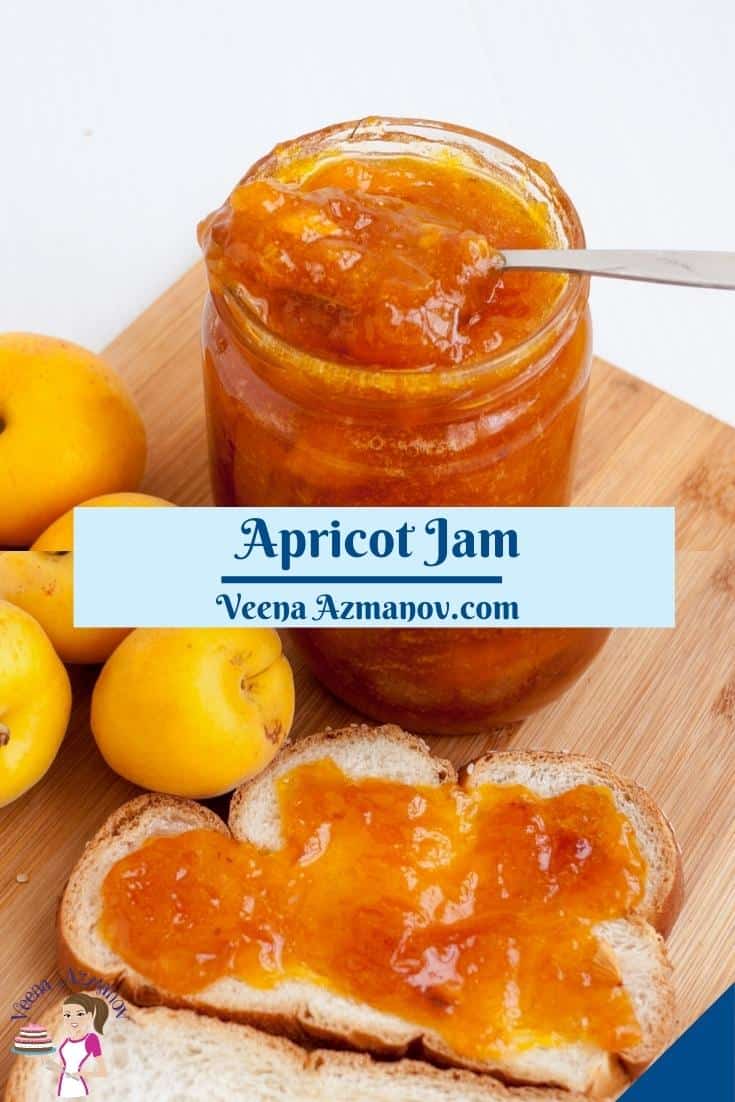It’s jam time again! Right? We love jam, and I love making jam as much as eating jam. You should know from the many jam recipes I have here, that I don’t can my jams. Instead, what I like to do is make a small quantity of many different jams and then keep them in the fridge. That way my kids (and me) can indulge in many different flavors and I can make small qualities instead of one big pot!!
Why make this apricot jam?
No-fail method – This recipe is simple and easy. And if you’ve never made homemade jam you will definitely start now. No- canning – This homemade recipe is without the fuss of canning. Just pour the jam into sterilized jars and save them in the fridge or freezer. However, I have given you the detailed process for canning too. No pectin – Ideally, you can make jam with just two ingredients: fruit and sugar. Because most fruits have natural acidity and pectin. And yet, adding lemon juice helps break down on the skin. Low-sugar – Fresh apricots are naturally soft and sweet. Therefore, you don’t need to add a lot of sugar to this jam.
Look at that color? Love when my apricot jam has a rich golden color like this. You can almost taste it when the color is so glorious. Right?
Step-by-step: Homemade apricot jam
Mark an X on the bottom of the apricots. Then, blanch them in hot water for 5 minutes. Peel and remove but do not discard the seeds/pits. Roughly chop the fruits and set them aside.Pro tip – Marking an X on the fruit helps to peel them easily as the skin shrinks when blanching. Place two small ceramic plates in the freezer so we can use these to test the jam later. Alternatively, you can use a candy thermometer to check the doneness of the jam. In a heavy bottom pan, combine the chopped apricots (and a few kernels), sugar, salt, and lemon juice. Also, add the star anise and cinnamon stick if used.Pro tip – If you are using fruits with skin on, let the fruits macerate in sugar and lemon juice for a few hours before cooking. This softens the skin considerably. Cook on medium heat until the sugar is dissolved. Then, turn the heat up and let the mixture come to a boil. Let it boil for two minutes on medium-high.Pro tip – Boiling the jam is important as it releases pectin from the skin and seeds in fruits. Then, turn the heat to medium-low. The jam should still be simmering but at a low simmer, not bubbling. Next, use a vegetable masher to mash the fruit – so you have a smoother jam-like consistency.Pro tip – Mashing the fruit is optional, as the fruit will break down into smaller chunks similar to preserving as it cooks. However, mashing will give smoother consistency like jam. Continue to simmer for about 20 to 30 minutes more stirring often so it does not stick to the bottom of the pan. The jam will continue to thicken as well as deepen in color as it cools.Pro tip – The cooking time will depend on the quantity of the jam as well as the heat applied to it. It’s ok to cook a little longer but there must be a simmer for the fruit to release pectin.
Testing the jam
Remove one of the ceramic plates from the freezer. Place a teaspoon of jam on the cold plate.Pro tip – The cold plate will help cool the jam almost instantly and give you a good indication if the jam is ready. Set aside for 2 to 3 minutes. Then, test with your finger. Simply move/push the jam with your finger. If it wrinkles/crinkles it means the jam is ready. And if not, let the jam cook a couple of minutes more and test again.Pro tip – You may need to test the jam on a ceramic plate more than once or a couple of times depending on how early you start checking. Alternatively, you can use a candy thermometer – the jam should reach 105 C / 221 F.Pro tip – I find the thermometer to be the easiest and fool-proof method to check for doneness. Optional – Just when you are ready to take the jam off the heat, add a teaspoon of butter and stir well. Butter helps dissolve foam that accumulates on top of the jam.Pro tip – You don’t need more than 1 teaspoon of butter to help with the foam. It will also give you that glossy shine. Next, pour the jam into warm sterilized jars leaving 1/4 inch space from the top. Use a clean sterilized knife or spatula to move the jam a bit – this will remove any air pockets. Then, place a piece of wax paper on the top before you place the lid on tightly. Clean the rim of the jar with a clean paper towel. Top the lid.Alternatively, use the lid with screw-on rings that come with the canning jars.
The canning process (if you plan to can the jam)
Sterilize the jars
Sterilize 4 x 8 oz (250 g) jars by washing them in hot soapy water or cleaning them in the dishwasher with a gentle cycle. Then, place them in the oven for 20 minutes at a low 284 F / 140 CPro tip – I find the dishwasher does a good job of cleaning and the oven dries any excess moisture in the bottles. Note – Leave them in the oven until you are ready to use them (you can turn the oven off). Don’t forget to wash and sterilize the bottle lids as well.
Canning process
Place a rack in the bottom of a large stockpot. Fill half the pot with water. Bring the water in the pot to a boil on high heat. Lower the jars over the rack leaving enough space between the jars.Pro tip – The level of water should be at least an inch above the top of the jars. So if necessary, pour more boiling water. Bring the water to a boil again. Cover the pot and process/simmer for 15 minutes. Then, carefully remove the jars from the stockpot and place them on a kitchen towel to absorb any excess moisture. Cool completely.Pro tip – The hot jars are very delicate so make sure to use tongs when taking them out and place them on soft towels to prevent them from breaking. Press the top of the lid to ensure the seal is tight – the lid should not move at all. Store in a cool dry place.
Storage
If canning, the canned jam will stay in a cool dry place in the pantry for up to a year or even longer. When not canned, the jam will stay at room temperature for a month or more in good weather. You can also keep the jam in the fridge for 3 to 6 months. Label the jar with the name and date so you know what is in and when you made it.
NO Sugar Apricot Jam
Sugar helps the creation of pectin which makes our jam. But what if you can’t have sugar? Or you don’t want to eat sugar? You can still make jam. Here’s how. First, pick the naturally sweetest apricots you can find from the market. Forget everything you read about pectin and buy a box of natural pectin. These are available in most supermarkets. If you don’t want to use pectin you can use chia seeds. The difference is that jam with pectin has a longer shelflife than with chia seeds. And also grab some fresh lemon juice because that has some natural pectin in it too. The formula is pretty simple and it belongs to my mom If you ever find you need to add more sweetness, add a little agave syrup or honey to the jam just before you take it off the heat. This will sweeten it a bit. I use to make no sugar jams for a friend of my mom long ago because she was diabetic. She really loved the jam so it was something she really enjoyed for breakfast every day.
Frequently asked questions
Creative ways to serve apricot jam
Glaze for Roasted Meat: Mix apricot jam with other ingredients like Dijon mustard, soy sauce, and herbs to create a glaze for roasted meat such as chicken, pork, or lamb. Brush the glaze onto the meat during the last few minutes of cooking for a flavorful and glossy finish. Apricot Thumbprint Cookies or sandwich cookies: Bake a batch of classic thumbprint cookies and fill the indentations with apricot jam. Combining the buttery cookie and the fruity jam creates a delightful treat. Try Easter egg sandwich cookies Apricot Baked Brie: Top a wheel of brie cheese with a generous spoonful of apricot jam, then bake it until the cheese is gooey and the jam is warm and bubbly. Serve it with crackers or sliced baguette for a delicious and elegant appetizer. Sweet and Savory Sandwiches: Spread a layer of apricot jam on one slice of bread and combine it with roasted turkey, ham, or goat cheese. Combining sweet jam and savory fillings creates a unique and delicious flavor profile. Apricot Barbecue Sauce: Mix apricot jam with ingredients like ketchup, Worcestershire sauce, vinegar, and spices to create a flavorful barbecue sauce. Use it as a glaze or dipping sauce for grilled meats, vegetables, or tofu. Apricot Yogurt Parfait: Layer apricot jam with Greek yogurt and granola in a glass or jar to create a tasty and colorful parfait. Repeat the layers and top it off with fresh apricot slices for added freshness. Apricot Glazed Salmon: Combine apricot jam with ingredients like soy sauce, ginger, garlic, and lime juice to create a glaze for salmon. Brush the glaze onto the salmon fillets and bake or grill them until cooked through. The glaze adds a delightful sweet and tangy flavor to the fish. Apricot Salad Dressing: Mix apricot jam with olive oil, vinegar, Dijon mustard, and herbs to create a flavorful salad dressing. Drizzle it over mixed greens, grilled chicken, nuts, and cheese for a refreshing and tangy salad. Apricot Pastry Filling: Use apricot jam for pastries like turnovers, tarts, or danishes. Spread the jam onto the pastry dough, fold it over, and bake until golden and flaky. Apricot Cheese Plate: Serve apricot jam alongside a selection of cheeses. Pair it with creamy Brie, tangy goat cheese, or aged cheddar for a delightful sweet and savory combination.
Fresh Fig Jam – No Pectin (just 3 ingredients) Microwave Strawberry Jam – No Pectin Old Fashioned Raspberry Jam – No Pectin See all jam recipes
Thank you for sharing - Save for later
